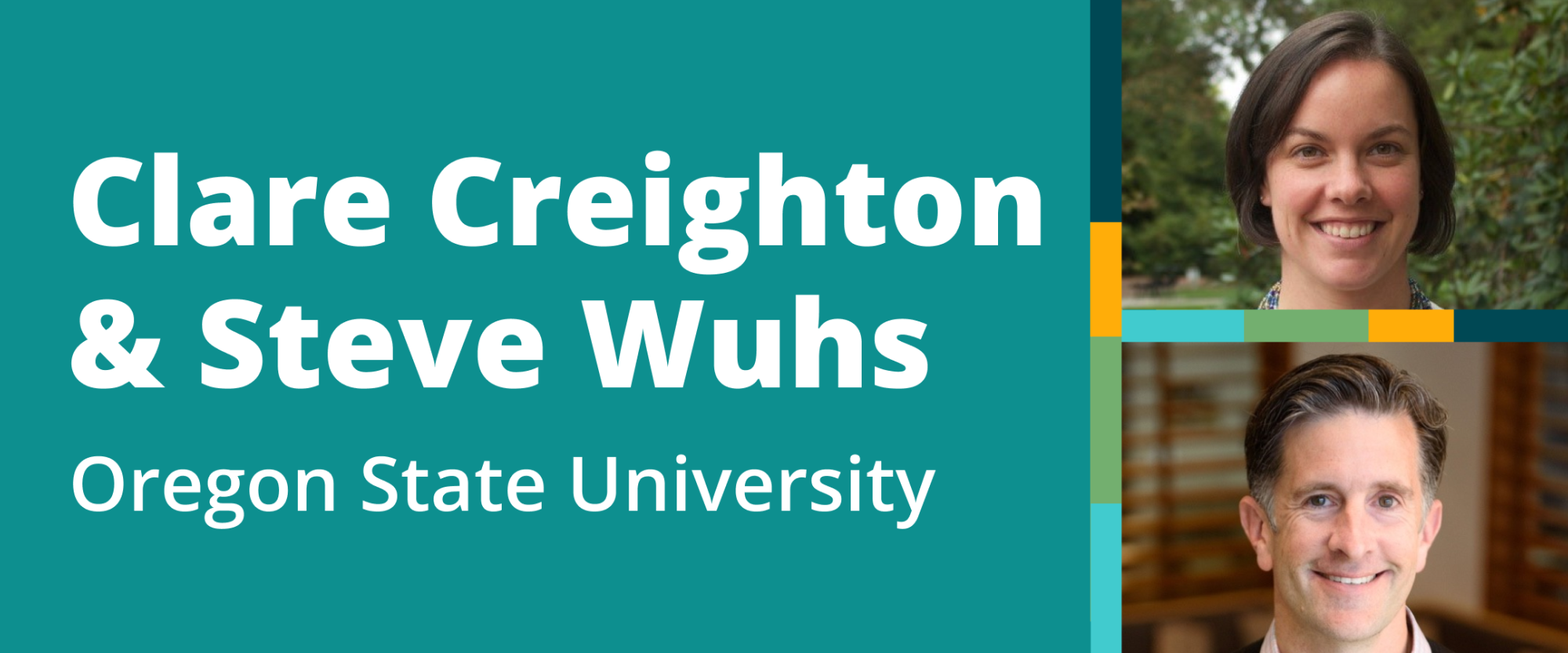The 2024 University Innovation Alliance National Summit brought our members a wealth of new ideas and perspectives about advancing student success on an institutional scale. One especially popular event featured Oregon State University’s Clare Creighton (Director, Academic Success Center & Writing Center) and Steve Wuhs (Deputy Senior International Officer). Their session, part presentation and part workshop, focused on how to create a unique strategic plan, flip challenges into assets, build leadership teams, share data, operate task forces, and foster collaboration.
Prosperity Widely Shared
Like so many higher education institutions, Oregon State University (OSU) serves an increasingly complex student population. Between the nine colleges on its main campus in Corvalis, the Cascades satellite campus in Bend, and its online programs, OSU’s 38,000 students include first-time full-time (FTFT), transfers from other schools, part-time, and returning students. With degree completion as the ultimate marker of student success, different types of students require different levels of academic support. As Steve Wuhs explained:
Our strategic plan is called Prosperity Widely Shared, which has two goals: an 80% graduation rate for our FTFT student cohort, and equalizing graduation rates across demographic groups. Those are big, ambitious goals, but things don't map neatly onto the decentralized university that we are. So, as the land-grant university of Oregon, we need to think about how we reconcile access and service across our colleges, which have their own interests and goals.
Turning Challenges Into Assets
Tailoring a student success initiative begins with examining the institution’s origin story and understanding the initiative’s proposed endpoint. Clare Creighton emphasized how that endpoint, however aspirational, must be realized through building on the solid foundation of history and context. She recalled many reports that wound up sitting on a shelf because no one know how to fully implement all those well-intentioned ideas. A truly effective architecture begins with questions, she said, not statements:
Are we clear on our vision? Are we all looking at the same endpoints? What's the infrastructure? Who is doing student success work? Are they clear on how their roles relate? Then we can say, "Let's figure out that path forward, and let's build both the vision and the structure in a way that makes sense for OSU, for the structure and the culture that we live with."
She noted that OSU’s breakthrough moment was when it started rethinking challenges as assets, flipping unique problems to turn them into unique solutions.
How can being a decentralized campus serve us in our student success work? By allowing each college or program to be more specific about their piece of the strategic work that we're doing as a campus. And when we made decisions about our task forces, we could make sure that the initiatives mapped up strategically to this, and that we could see the gaps in our strategy. So, the why of having a vision was important.
Clare admitted that an effective initiative requires continuous fine tuning, and that after a year, it was time to take Prosperity Widely Shared off the drawing board and begin workshopping their strategy to better assess reality against expectations. This helped her team clarify each college’s pinch points, providing practical data for central decision making. “Having a finished vision is better than having a perfect one,” she said.
A Structure for Student Success
Steve went on to explain that turning their team’s vision into a structure began with embedding those new ideas into OSU’s academic culture:
We asked our nine undergraduate colleges to internally develop leadership teams for student success. Some had them, others didn't. The best examples included the dean, who has financial oversight and control of resources. In addition, we want the undergraduate associate dean, the college’s advising leads, career and professional development lead, and student engagement lead. We flesh those out with academic department heads serving undergraduate students. We ask those teams what are your bright spots; what challenges do you see; how do you relate; what lessons do you could see in other colleges that you could be drawing on? And we give them input as well.
For over a year, OSU has benefitted from an Every Student Graduates (ESG) group, a cross-university strategic team of 15 leaders drawn from academic affairs, student affairs, and the e-campus unit. ESG identifies each school’s persistent challenges and opportunities to move forward, then facilitating how those challenges and opportunities can be shared to advance each college individually while moving everyone toward those common university goals. Steve added:
Building that architecture has been enormously successful in terms of getting people on board. It acknowledges colleges for the work that they do and the home that they are to students, and it builds a framework for collaboration. That structure has enabled our colleges to learn more about themselves internally and ultimately should lead to different priorities.
The Data Behind Student Success Initiatives
An effective assessment strategy is built on data, and Oregon State’s ESG team makes their student success metrics available through a data sharing interface. This tool allows deans, associate deans, academic advisors, and student success professionals across campus to review these metrics by college, by major, and by other relevant categories. Steve, Clare, and their colleagues knew that a robust, comprehensive data infrastructure is the only way for a large institution to track the markers and nuances of academic performance required for improving student success. Steve said:
The goal for our transparent data sharing interface is enabling colleges, academic programs, and the university as a whole to identify gaps in student success and then develop strategies to narrow those gaps. We can't work to advance student success across the university when we have a system that isn’t egalitarian in terms of providing the data.
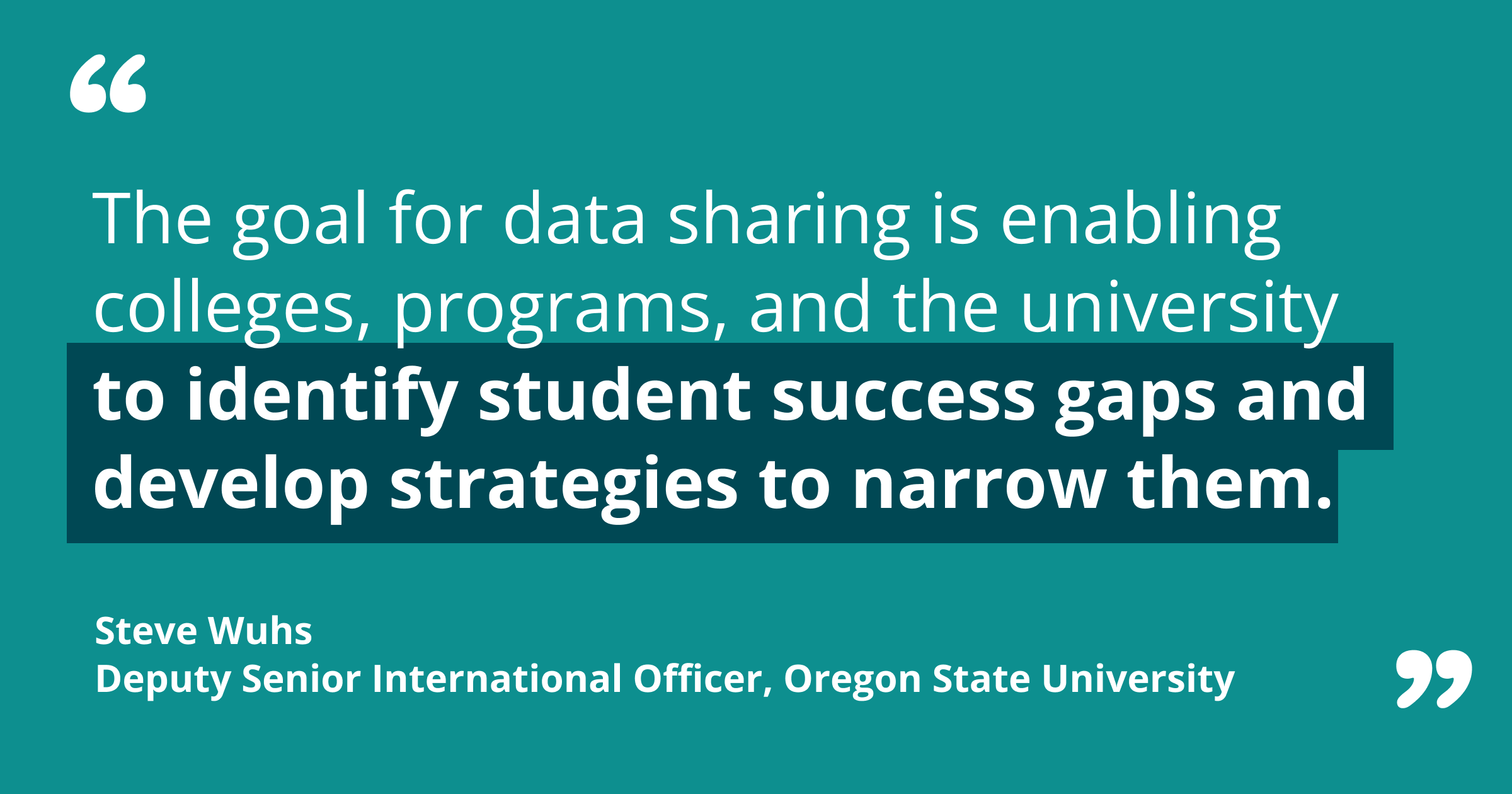
Building and Coordinating Task Forces
Once your institution has a system for aggregating and sharing data, what’s next? Clare addressed the organizational dynamics of a student success initiative, including how to build and enable the task forces implementing the ESG group’s work.
We needed to scope what task forces do. Are they exploratory? Are they about designing implementation? How do we know if they've been successful? Also, who's making the decision about which task force is running for how long? And when they finish, who's making decisions about what happens with those recommendations?
Some of these practical decisions come back to ESG, which prioritizes the next steps based on realistic timelines and available funding. At this level of leadership, ensuring transparency is vital for keeping the stakeholders informed, engaged, and feeling valued. Clare explained:
There's been a lot of times in student success work when folks at our institutions haven't been in the room. It's hard when change feels like it's being done to you without a broader understanding of the role that you're contributing. So, a piece of our work was to make the bigger-picture strategy visible. Let’s recognize how much labor folks are putting into the student success work.
Student Success Through Leader Collaboration
Fostering engagement fosters collaboration. By highlighting the connection points between different college leadership teams, university leaders can break them out of their silos to show that they're not alone in the challenges they face and the support they seek. Clare described the spring student success summit that her team is designing: "We want it to look like a hackathon, having folks solve problems collectively in ways that they're not normally doing from a range of different perspectives. Collaboration hasn’t always happened without that kind of opportunity."
She suggested that rethinking purpose and practice is possible through rerouting the flow of ideas within an institution. Great ideas don’t need to happen in isolation within an architecture that allows for others to reflect on what’s being shared and continue to build on it with their own perspectives and expertise.
This is important because we're able to hear ideas that we wouldn't have had access to, and also because everyone feels like they're working in a system where their ideas matter. We end up with a cycle where we're all excited about doing student success work, where we all have an opportunity to contribute, and end up with a better outcome and a better product because of that.
Note: This episode of the University Innovation Alliance’s Innovating Together Podcast originally aired on April 21, 2025. The podcast appears live on YouTube, Facebook, Twitter, and LinkedIn.
Resources Mentioned in This Episode
- Clare Creighton, Director, Academic Success Center & Writing Center, Oregon State University
- Steve Wuhs, Deputy Senior International Officer, Oregon State University
- Oregon State University
- Prosperity Widely Shared: OSU’s strategic plan
- Every Student Graduates (ESG): OSU’s advisory/leadership group focused on student success
- Our First Decade of Innovation: The UIA’s 2024 Annual Report, UIA, 1/29/25
- University Innovation Alliance National Summit, UIA, 4/11/24)
Watch the Archive
Bios of Guests and Host
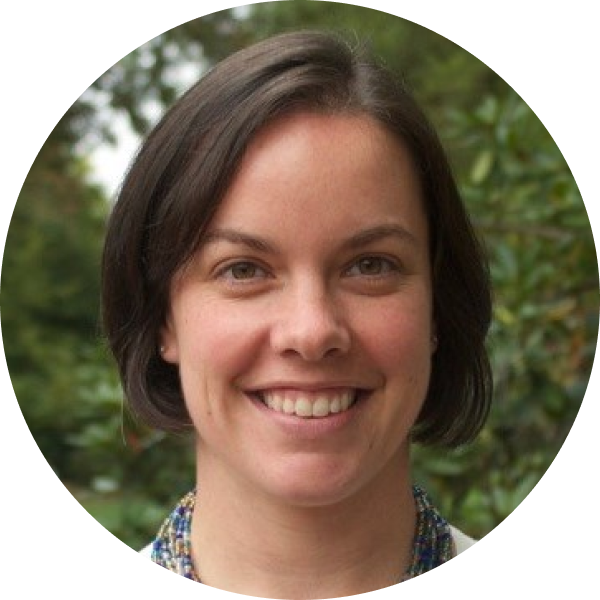
Guest: Clare Creighton, Director, Academic Success Center & Writing Center, Oregon State University
Clare Creighton serves as director of the Academic Success Center & Writing Center (ASC&WC) at Oregon State University. Since she began at OSU in 2009, Clare has worked on programming and initiatives that support student learning, success, and achievement. She seeks to reduce barriers to success while helping students navigate the college landscape and access resources. She enjoys project work that involves identifying and defining pinch points in the student experience, engaging in cross-campus collaboration and problem solving, and using student voice and perspective to inform decisions. Clare has done extensive work piloting early alert efforts at OSU, and more recently, her ASC&WC team has made micro changes to the student landscape to normalize and encourage early and frequent use of resources. She is currently exploring higher education leadership practices that center humanity and wholeness; push back on urgency, competition, and grind culture; and model collaboration, transparency, critical reflection, and feedback. Clare earned a BA in Art History & Visual Culture from Whitman College, and a Masters of Science in College Student Services Administration from Oregon State University.
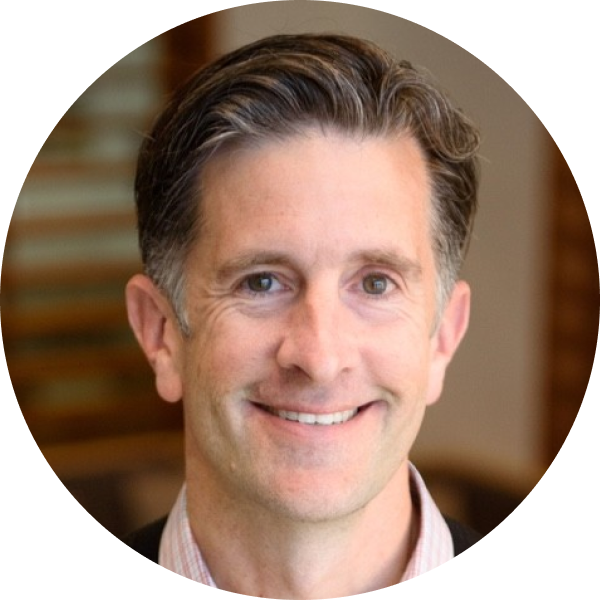
Guest: Steve Wuhs, Deputy Senior International Officer, Oregon State University
Dr. Steven T. Wuhs is the Deputy Senior International Officer at Oregon State University, advocating for transformative access- and equity-oriented undergraduate education. Their background reflects a strong focus on global learning and internationalization within higher education. Steve’s experience includes university leadership and academic affairs. At the University of Redlands, they served as Interim Dean of the College of Arts and Sciences and Senior International Officer. Earlier, they held the role of Associate Provost for Internationalization and Professor of Political Science, demonstrating applied knowledge of political systems. Their work history includes serving as Professor and Chair, and as Director of Salzburg Semester and Bildungsverein Der Universität Von Redlands. Prior to OSU, Steve briefly contributed as Faculty for International Programs Leader at The Washington Center. Building on experience in higher education, they were also a Visiting Assistant Professor at Bucknell University. Their commitment to international academic cooperation is further supported by their time as a Fellow and Stipendiat at the Alexander von Humboldt Foundation. Steve holds a Doctor of Philosophy from the University of North Carolina, Chapel Hill, and a Bachelor of Arts from Macalester College.
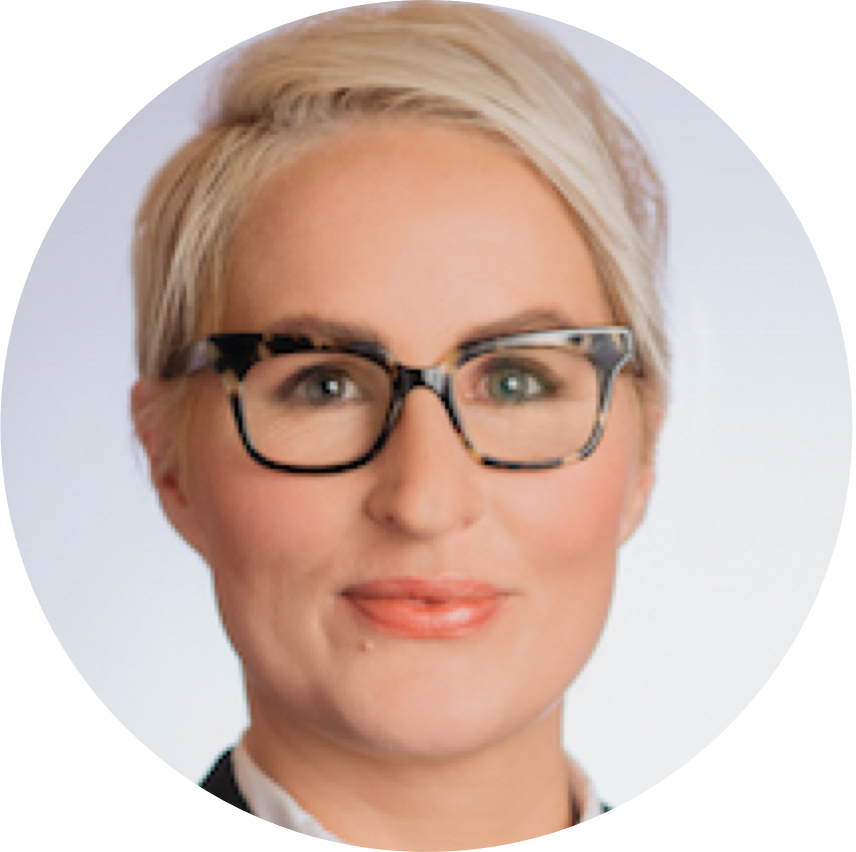
Host: Bridget Burns, Executive Director, University Innovation Alliance
As a trusted advisor to university presidents and policymakers, Dr. Bridget Burns is on a mission to transform the way institutions think about and act on behalf of low-income, first-generation, and students of color. She is the founding CEO of the University Innovation Alliance, a multi-campus laboratory for student success innovation that helps university leaders dramatically accelerate the implementation of scalable solutions to increase the number of college graduates.
About Innovating Together
Innovating Together is an event series that happens live on YouTube, Facebook, Twitter, and LinkedIn. It also becomes a podcast episode. Every week, we join forces with Inside Higher Ed and talk with a higher education luminary about student success innovations or a sitting college president or chancellor about how they're specifically navigating the challenges of leadership. We hope these episodes will leave you with a sense of optimism and a bit of inspiration.
Rate, Review & Subscribe
Learn why hundreds of people have rated the Innovating Together podcast 5 stars. Please join others and rate and review this podcast. This helps us reach and inform more people -- like you -- who are committed to helping more students succeed.
Click here, scroll to the bottom, tap to rate with five stars, and select “Write a Review.” Then be sure to let us know what you loved most about the episode. Also, if you haven’t done so already, subscribe to the podcast. You'll never miss an episode.

